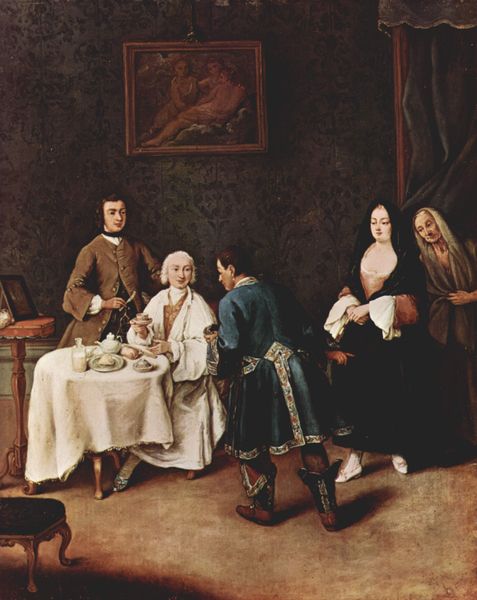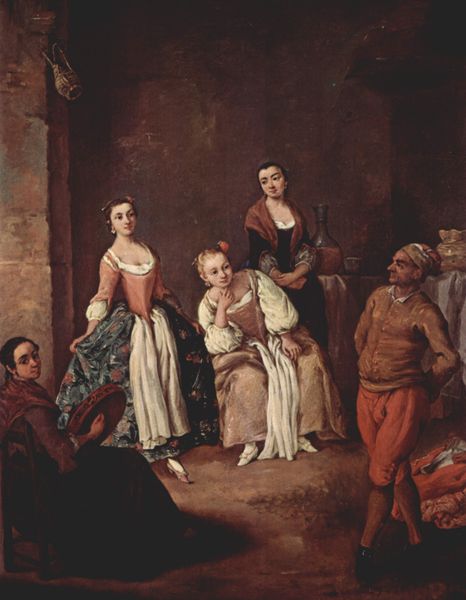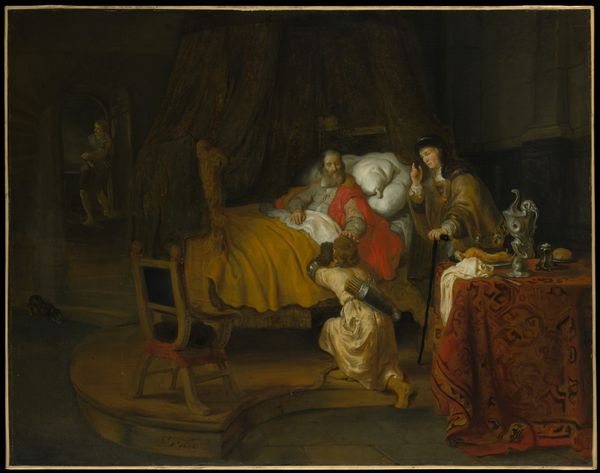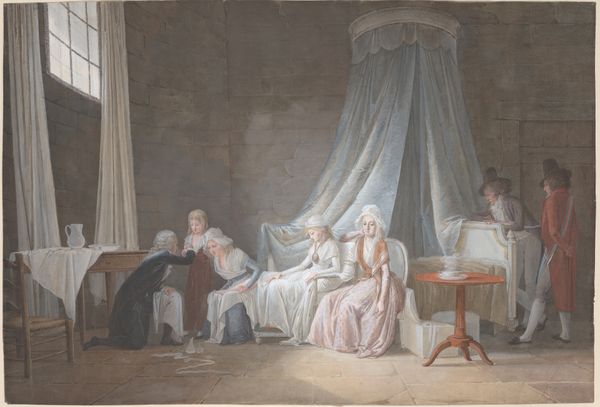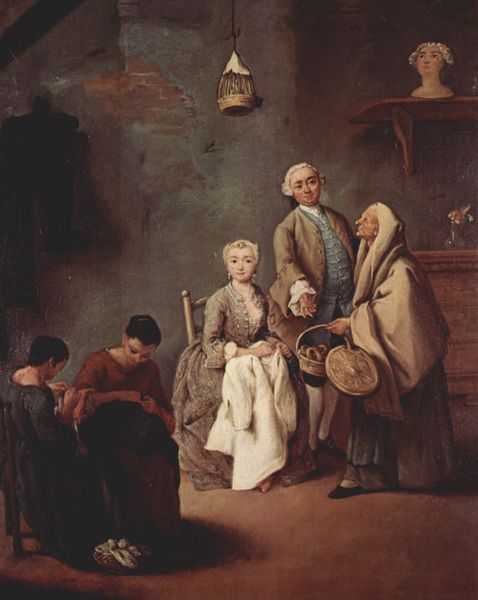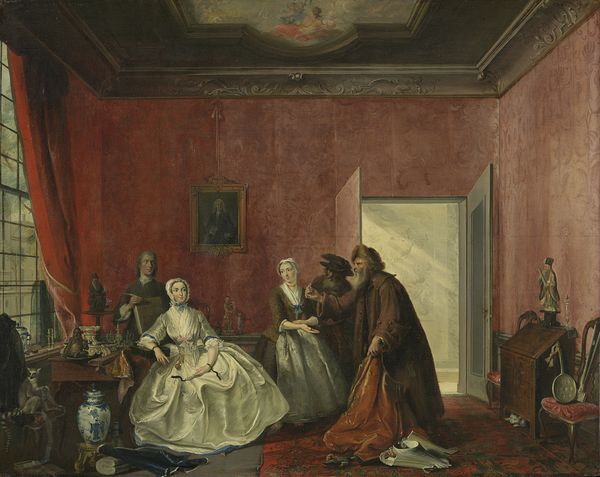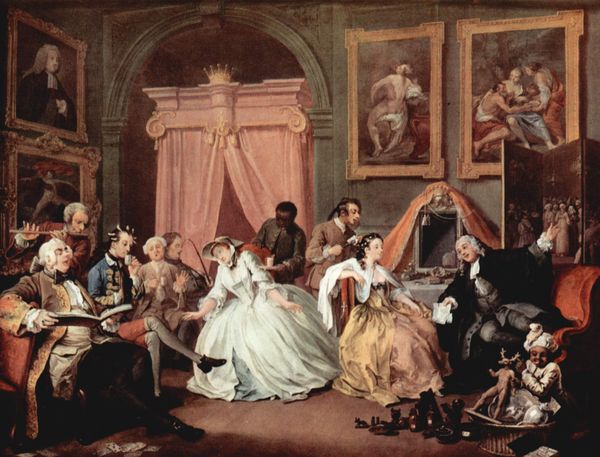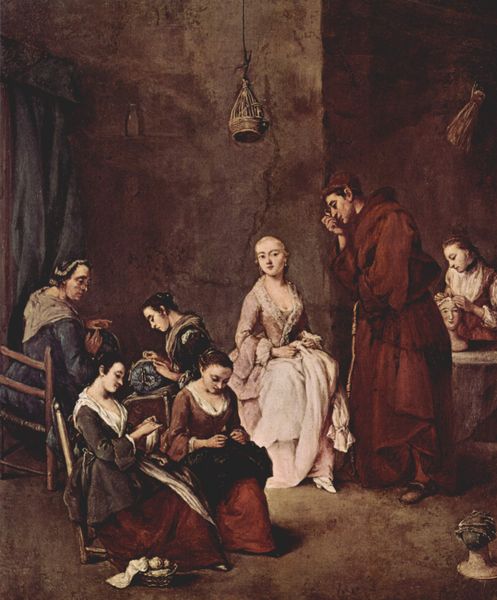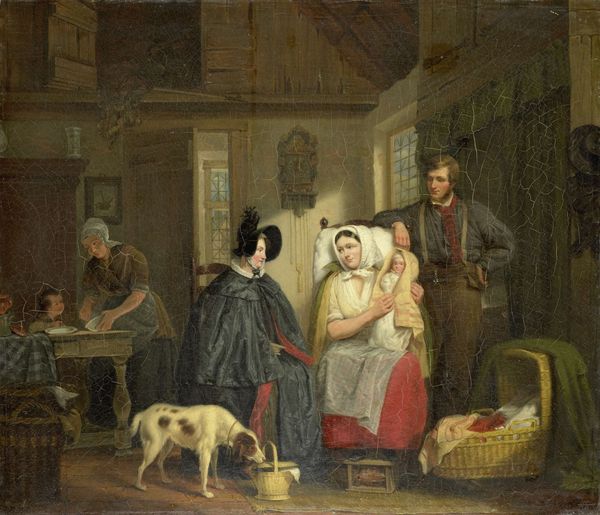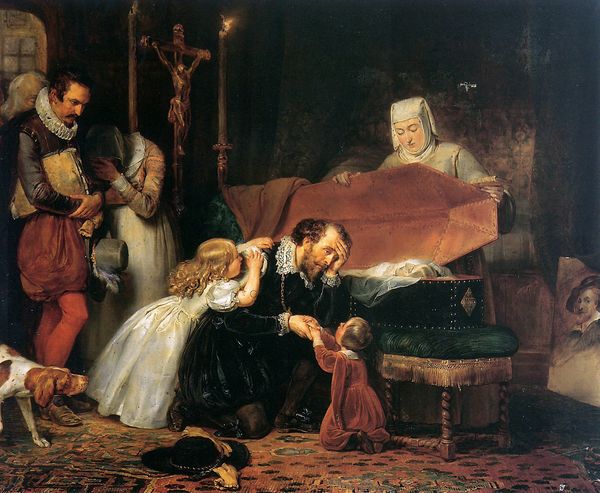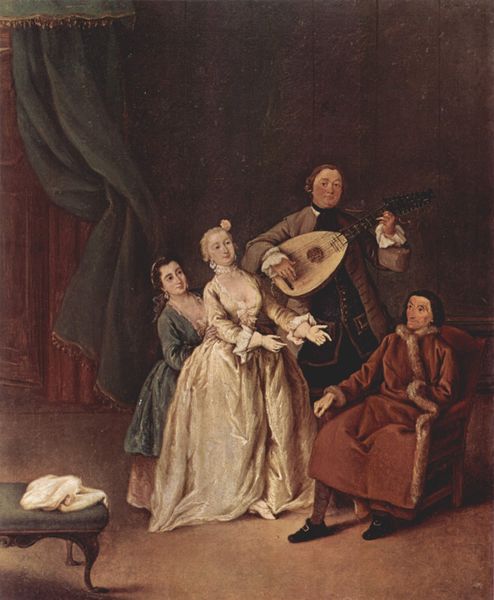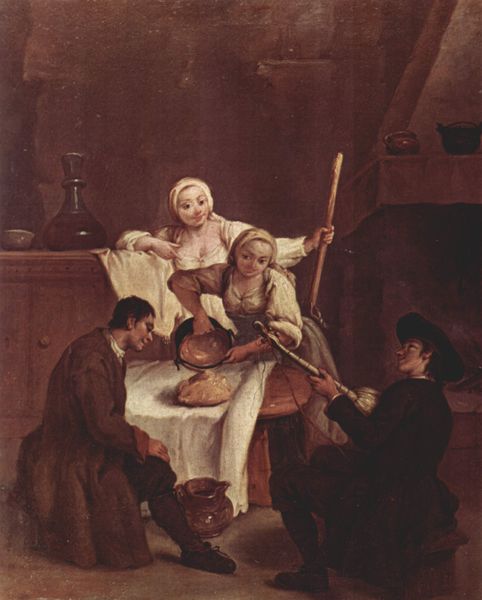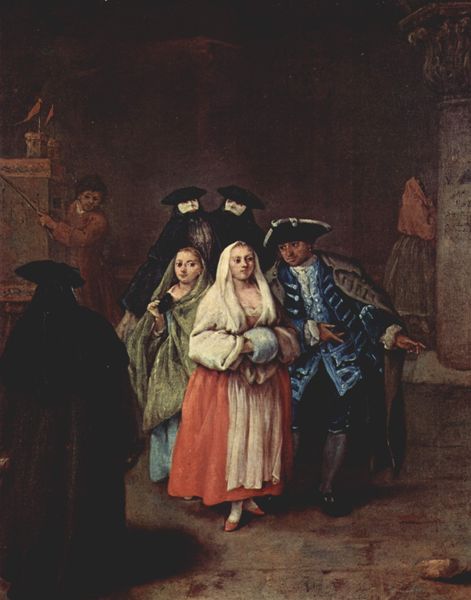
painting, oil-paint
#
portrait
#
venetian-painting
#
painting
#
oil-paint
#
dog
#
genre-painting
#
rococo
Dimensions: 49.5 x 60.9 cm
Copyright: Public domain
Curator: It's quite dark, isn't it? A sort of shadowy tableau with a central figure bathed in light. Editor: Indeed. What strikes me first is the composition; Pietro Longhi's "A Visit to a Lady," painted in 1746, seems almost stage-like, capturing a fleeting moment of Venetian social life. The figures are arranged as though posing for a portrait, reflecting the period’s fascination with theater. Curator: I see a concentration of visual weight anchored around the small white dog, connecting the bending man offering his services and then up through the pale pink dress. Dogs appear regularly throughout art history; what does its presence suggest in this scene? Editor: Dogs were increasingly popular companions during the 18th century, symbols of loyalty and status. Its inclusion hints at the lady’s affluence and refined taste, reflecting the burgeoning consumer culture of Venice at the time. The attention given to this lapdog could even symbolize a critique of frivolous aristocratic pursuits. Curator: Certainly. And what about the lady's gaze, averted from us, perhaps focused on something unseen or of greater import. Do you sense an implied narrative here, or perhaps a societal commentary through a character seemingly unaware of their own significance? Editor: Absolutely, Longhi uses genre painting to gently satirize the Venetian upper class. This lady, surrounded by her attendants, seems indifferent, lost in her own world. It’s a subtle commentary on the perceived decadence and moral laxity that some historians argue contributed to Venice’s eventual decline. The painting acts as a mirror, reflecting and critiquing societal norms. Curator: It makes one wonder about the role of art in Venice at this time, beyond mere decoration; was it a vehicle for observation or possibly reform, albeit couched in elegance and charm? Editor: Definitely. It’s a window into the rituals and values of a society on the cusp of great change. This piece serves as both a record of, and a reflection upon, that historical moment. Curator: A fascinating snapshot, indeed, leaving us with more questions than answers. Editor: Precisely, encouraging us to look deeper into the context that gave rise to this delicate yet telling scene.
Comments
No comments
Be the first to comment and join the conversation on the ultimate creative platform.
